Category: Lifestyle
Working Dogs of Long Island
Sage
4 years old
Greeter
Andrew’s Family Farm

It’s just after 11 a.m. on a Monday and Sage picks up her favorite orange ball and drops it at the feet of her owner, Rose Andrews. “Sometimes, if she can’t find her ball, she’ll go into the farm stand and pick up a peach,” says Andrews, 24, a manager at her family’s Andrews Family Farm in Calverton.
The farm has been operational for the past three decades, but it only gained its mascot four years ago. Sage, a 4-year-old Labrador retriever/golden retriever mix, has spent nearly every day of her life — since she was 10 weeks old — at the farm stand.
“Our jobs would be a little bit more boring without Sage here, for sure.”
-Andrews, farm stand manager
“It’s hard to have a bad day when she’s here,” says Andrews as Sage lies beside her on a green John Deere Gator. “This, here, is her favorite place.”
Sage’s official role is greeter, says Andrews, explaining that patrons will sometimes come down to the farm just to see her.
In the farm stand, Sage weaves her way in and out of the legs of shoppers, patrolling the area. “Every time someone pulls up she stands up from what she’s doing — unless she’s having a really deep nap.”
But there’s hardly any downtime on the Andrews’ 80-acre farm with 29 greenhouses growing flowers and vegetables sold at the stand and outsourced to local restaurants and farms.
Sage, just like her family, has work to do.
She gets to the farm at 7:30 a.m. with Andrews. “When we turn onto Hulse Landing Road, she sees the farm, it stretches far back, and she sits up and gets so excited. It’s like she doesn’t do this every day, but she does.”
Her routine begins by making the rounds: She checks in on the plants, smells the flowers, says hello to the farm’s rabbits and gently strolls through the greenhouses. “If you step on the flowers you’ll kill them, but Sage tiptoes around everything. She has greenhouse etiquette and knows not to step on the flats.”
Then, she follows Andrews, her brother William and their parents until it’s time to go home around 6 or 7 p.m. “She’s our little co-worker.”

Freddie
2 years old
Facility Dog
Cerebral Palsy Association of Nassau County, Inc.

Many of the more than 200 grade school students at the Cerebral Palsy Association of Nassau County in Roosevelt are nonverbal or have limited communication skills, but the excitement is written on their faces when Freddie, a 2-year-old Labrador retriever walks into their classrooms.
“Freddie, wave!” Jennifer Green, the school’s music therapist, calls out as Freddie lifts his right paw demonstrating how he greets students.
Ashley Brun-Johnson, 20, of Queens, is among the first to lift her arm back to him. She uses her iPad to communicate.
“Freddie has already helped with communication,” says Sherri Glazer, one of the assistant principals, explaining that children and young adults who are meeker in tone need to use a projected voice or use their communication devices to get a response from Freddie. “In the beginning, there were a lot of kids who we’d find were afraid of almost everything. Now they jump out of their shells to touch and engage with him,” says assistant principal Jessica Jean-Charles.
Freddie started his job as a facility dog at the school in May. He spends much of his day traveling between classrooms at the school, helping to encourage children learning motor and communication skills. For Jesus Bonilla, 9, of Hempstead, the command “Freddie bop” helps Bonilla to both speak at a louder volume, walk toward Freddie and reach out to “bop” his nose.
“I’ve seen such a change in Freddie and the students.”
-Gabi Lugo, 23, service dog instructor at the Guide Dog Foundation.
Gabi Lugo, of the Guide Dog Foundation, trained Freddie for nine months to prepare him for his job. She started off with basics — walking, maintaining eye contact — and gradually worked up to training Freddie to wave, “bop,” shake and more. “Coming back and seeing the difference in him, it’s almost like he knows his job now and settled into what he needs to do,” says Lugo, of Smithtown.
Freddie starts his day at 8:30 a.m., sits atop a pedestal and greets the students as they get off their buses by waving a paw. He’ll then walk alongside their wheelchairs as they make their way to their classrooms. He’ll pop into music therapy classes, development classes and more. For break time, he plays with toys in a fenced-in area outside or cuddle up for nap a bed placed by the desks.
“We knew that Freddie was going to love this. He’s really cut out for just bringing joy to people,” says Lugo.

Maclyn
3 years old
Explosive Detection Canine
MacArthur Airport

Suffolk County police officer Kevin Henry says the airport is always moving — which means that Maclyn is always sniffing.
Maclyn is a 3-year-old German shorthaired Pointer. She is the only female dog working in the Suffolk County Police Department. Maclyn is an explosive detection canine, working at Long Island MacArthur Airport in Ronkonkoma.
When she’s not doing her job, “she goes home with me and puts me to work at home,” says Henry, her handler. They live in Setauket.
While working at the airport, Maclyn is thorough and attentive. On a recent weekday, there’s a long line at the Southwest Airlines terminal. Henry walks her along the line, and she sniffs just about every suitcase and backpack within reach.
“She’s very calm,” he says, “and always working.”
In May 2019, Maclyn started training with the Suffolk County Police Department. For four months, she sharpened her skills in tracking, obedience and agility.
As an explosive detection canine, Maclyn is trained to move through crowds, find an odor source and follow it. When she finds something, Henry explains, she stays with it, usually by sitting down next to the source. That’s where he comes in.
Maclyn is the only working dog at this airport, so there’s a lot of ground to cover.
“When they’re sniffing, they get really tired,” Henry says. “Processing all the different smells, and they break it all down. They work really hard. It kind of wipes them out.”
So Henry makes sure Maclyn rests throughout her eight-hour shift as much as possible. He said she can “run through” the concourse sniffing luggage for about 45 minutes before needing a break. But if there aren’t a lot of travelers, she can last longer. Her favorite reward after work is playing with her ball.
In addition to being the only female dog, Maclyn is also the first dog of her breed in the county’s police department, Henry says. Henry adds that they’ve mainly worked with German shepherds and Labrador retrievers.
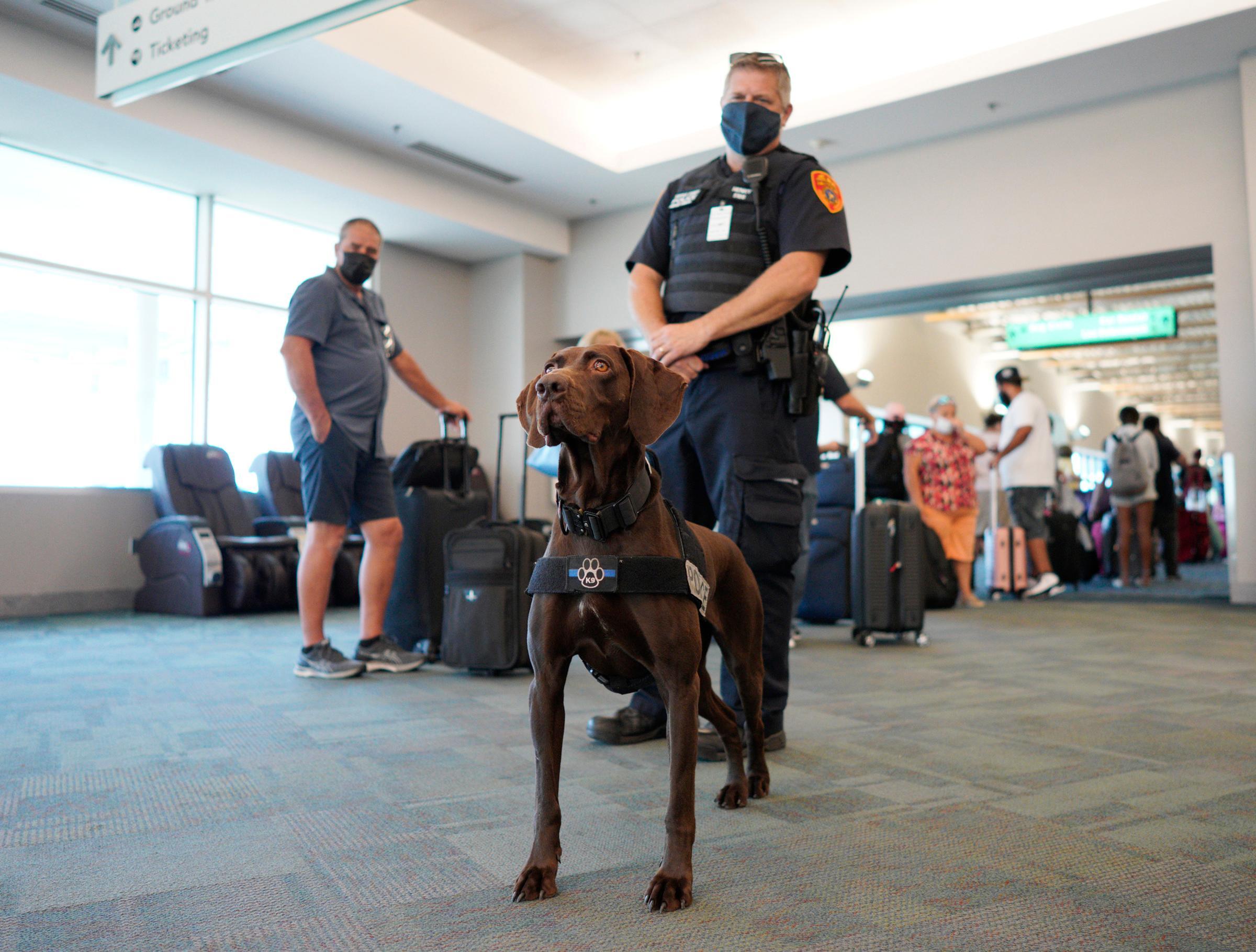
“Probably one of the other reasons why they picked the Pointer: High drive, a lot of energy,” Henry says. “She’s amazing though. When she’s here, there’s plenty of noise and plenty of movement. It kind of keeps her calm.”
This demeanor took some time to achieve. “In the beginning, she was all over the place. She used to drag me all around the airport,” Henry says. “She wanted to find the odor so she could play with her ball.”
During the coronavirus pandemic, the airport was empty most days. So to keep Maclyn’s skills sharp, Henry puts her to the test by setting up tasks for her to complete.
Now, with a sense of normalcy returning, she hasn’t skipped a beat. And Maclyn seems happy while she weaves through the crowds. She doesn’t get sidetracked when people pet her.
“We try to avoid people petting the dog but with her temperament, she’s great,” Henry says. “If you watch someone pet her, she’s still sniffing away. She’s still doing her job.”

Dewey
1 year old
Greeter and Taste-Tester
Pawcasso

Kids giggled and yelled “Dewey!” as an energetic Jack Russell Terrier jumped up and down at the entrance of Pawcasso. On a summer day, they fed him sweet peppers and gave him hugs on the grass.
This art studio and pet boutique in Westhampton Beach is home to one of the happiest employees you’ll ever meet. Dewey’s job is to schmooze visitors all day long.
Pawcasso is more than dog-friendly — it’s dog-embracing. Co-owners Barbara Martorelli-Shapland and Ron Shapland, of East Moriches, opened a pet store in 2015. But Shapland is a graphic designer, and some customers inquired about his work. Shapland started creating art inspired by pets.
“So one of our first thoughts was, we’ll sell some of his unique pet ideas at our store,” says Martorelli-Shapland. “But then more people started finding out he was an artist.”
This was also around the time that paint-and-sip nights began trending — evenings of paint classes paired with refreshments started popping up on Long Island and beyond.
That’s when the couple decided to move into their current space and expand. The first floor is their studio, where art classes for children and adults take place, and the pet boutique is upstairs. They sell treats (which Martorelli-Shapland makes herself by dehydrating all-natural meat and vegetables), collars, leashes and specialty items for dogs and humans alike.
“Animals and art,” Martorelli-Shapland says. “How could you go wrong?”
Pet owners can bring their dogs while they paint, and the pup can even become a part of the experience, Martorelli-Shapland says.

“Their dogs will lay down, sometimes they’ll sit on a chair,” she says. “And they can paint either them or something else. And we have animals incorporated into almost all of our paintings.”
The “big draw” for the customers, the owners agree, is Dewey. The 1-year-old Jack Russell Terrier mix greets folks when they arrive at Pawcasso. The main entrance is a Dutch door, horizontally split and open on top. Customers get a great view of Dewey on their way in — he jumps excitedly so he can be seen through the door.
When children come in for art classes at the studio, that’s when Dewey really gets to work.
“First thing he does is he greets the kids that come in,” Martorelli-Shapland says. “Kids that love dogs tend to fall on the floor and let him go crazy and lick them.”
“All you hear is, ‘Dewey, Dewey, Dewey,’” Shapland adds.
“When we first got him when he was a puppy, we would go home and be like, ‘If I hear the name Dewey one more time, I’m gonna scream,’ ” Martorelli-Shapland says with a laugh.
“He plays with them and then as customers come in, he greets every customer,” Martorelli-Shapland says. “He also gets to play with all the dogs, so he loves that.”
Lucky for Dewey, he’s also a “taste-tester” for all of the treats sold at Pawcasso. But he doesn’t do this job alone — the owners have another dog who roams the boutique area of the store. Kava is a nine-year-old Great Dane. When she was a puppy, she welcomed customers like Dewey does now, Martorelli-Shapland says. Since she’s gotten older, now she mostly hangs out upstairs in the boutique while Dewey entertains in the studio below.
“They still love her; they go up and see her,” Martorelli-Shapland says.
Meanwhile, Dewey also goes for walks with kids who take classes there, and they’ve even taught him a few tricks. As he jumps for joy at the entrance for any who comes in or just passes by, children laugh and point while painting their masterpieces.
“That’s his job,” Shapland says. “Making kids laugh.”

Kota
6 years old
Grief Therapy Dog
Moloney Funeral Homes
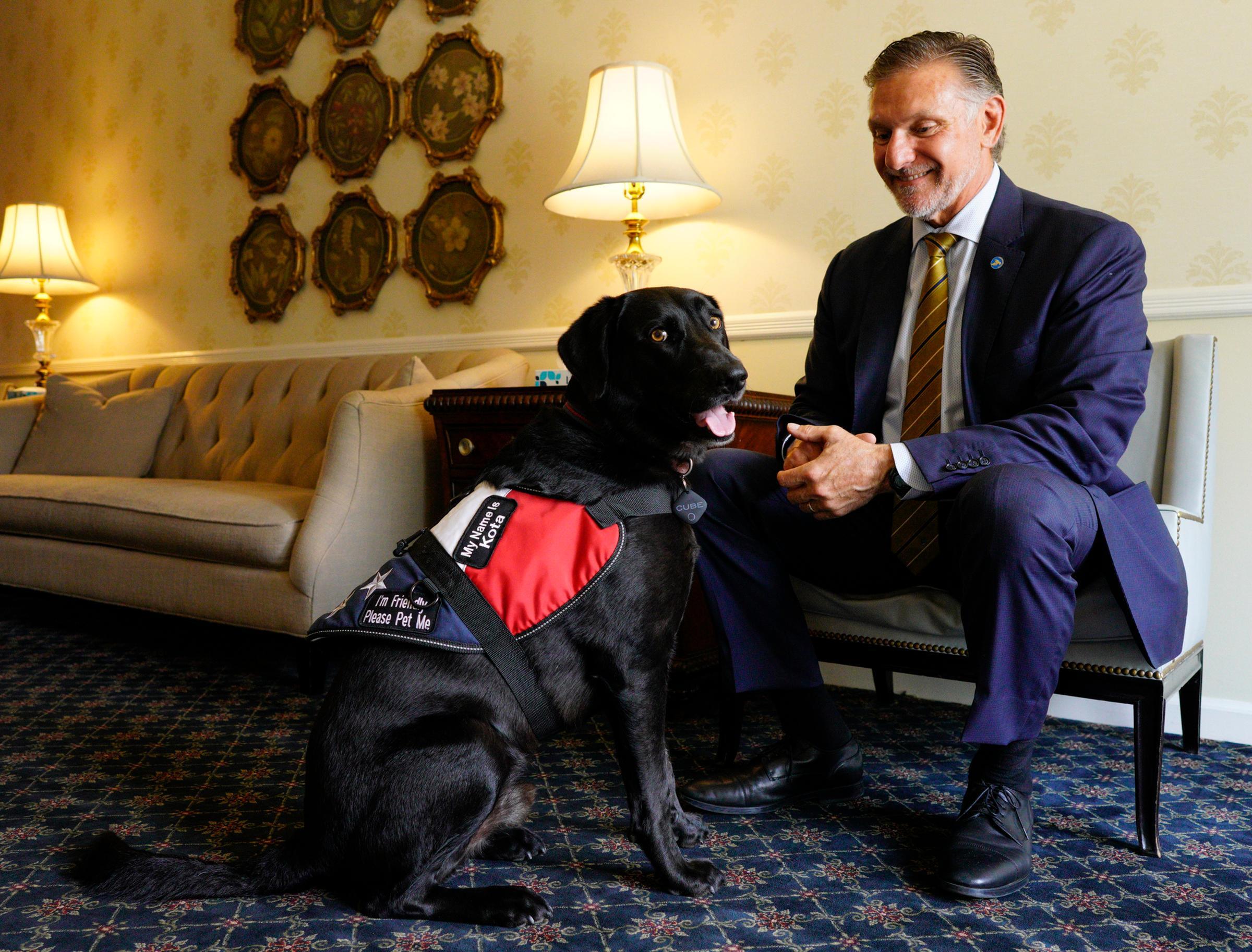
Six years ago, Kota was facing numbered days at a kill shelter in Arkansas. Now, he spends his time helping Long Islanders grieve the loss of their beloved family members at Moloney Funeral Homes.
“It’s crazy how his journey has come full circle,” says Peter Moloney, the owner of Moloney Funeral Homes which has seven locations in Suffolk County.
Moloney rescued Kota, a 6-year-old Labrador/Weimaraner mix with his family and after noticing his calm temperament, he trained him to become a therapy dog to offer relief during wakes.
“He knows when he’s coming to work when he sees the vest.” Kota’s uniform is a patriotic red, white and blue vest with a patch that reads, “I’m friendly, please pet me” — that’s exactly what his job entails.
Kota spends most days right beside Moloney — in his office in Ronkonkoma, greeting guests and staff, walking the grounds and attending monthly staff meetings. “He’s the only one that groans,” he jokes. “He gets away with it.”
But Kota’s biggest responsibly is attending wakes to serve as an emotional support animal, allowing those grieving to hug, play, pet or simply sit beside him. Kota attends as many as five services per day, spending up to 20 minutes with each.
“He’s brought so much relief to grief through the past years to many, many families,” he says, recalling a time when Kota consoled a 92-year-old man who’d lost his wife. “Kota just put his head on his lap and offered him that comfort he needed.”
Moloney says it’s been rewarding to watch as he didn’t initially think Kota would make such an impact. He introduced the complimentary service at his funeral homes five years ago after witnessing the power grief dogs can hold while at a business meeting. It was that experience that encouraged him to train Kota to do the same. “We recognized that Kota was very smart and docile, so we came home and did some training.”
That turned into six months of training four times a day and a therapy dog certification. “He’s been working with families ever since.”
On the off chance he’s not traveling to services, he can be found lying in bed in Moloney’s office in Ronkonkoma. “He’s busy. He has a place up in my office where he relaxes with his little toys he chews on. He’s a true companion for me.”
Writers and producers: Meghan Giannotta and Rachel Weiss
Digital development: Mark Levitas and Matthew Cassella
Photo and video: Chris Ware
Multimedia journalist: Steve Langford
Long Island Trivia: Summer Edition
Layering on the minimony: LI couples say ‘I do’ to additional wedding costs
Layering on the minimony
Long Island couples say ‘I do’ to additional wedding costs
Dropping tens of thousands of dollars on a wedding has become average for Long Island couples, studies find.
But in the COVID-19 era, many brides and grooms are tacking on an unexpected cost: the minimony.

For Michelle Rock, 30, and Jonathan Pavlica, 30, of Bellerose, that meant spending another $5,000 on a 3-hour wedding at Westbury Manor with only eight guests …
… on top of their previously budgeted $35,000 for a 90-person event at Chateau Briand, set for later this year.

WHAT IS A MINIMONY?
A small, socially distanced wedding commonly held in the months before bigger nuptial events at homes or
catering halls. It often includes a ceremony and dinner reception.
TOTAL COST: $2,000 to $10,000+
Most weddings last year, held as minimonies, cost about $19,000, including the venue, dress, and other extras, according to a national survey by The Knot. It might seem like an affordable price drop, but for many local couples, it’s a precursor to the traditionally expensive 150-plus guest celebration their wallets are still on the hook for.
IN 2020:
-
 96%
96%
altered their wedding plans -
 88%
88%
moved forward with their receptions / ceremonies on a smaller scale -
 80%
80%
had to downsize their guest lists -
 43%
43%
added a virtual component -
 35%
35%
chose to move their wedding reception/ceremony outdoors
Think of the minimony as another event the couple now hosts. It’s a scaled-down version of a larger event that often features many of the same elements, including notable moments like cutting the cake and the couple’s first dance.
Of the couples who moved forward with their wedding ceremony in 2020, 42% hosted a minimony and still plan on holding a larger reception, according to the survey which polled more than 7,600 couples.
Couples dreaming up their nuptials are now seeking estimates from vendors not typically a part of the pre-COVID planning process: tent rentals, backyard caterers, portable dance floors, alcohol, space heaters and more. The exact cost of a minimony varies based on how many guests are in attendance and how much DIY the couple takes on.
And while larger weddings are beginning their slow return, the intimate minimony trend may be here to stay.
“I don’t think it’s going anywhere anytime soon,” says wedding planner Michael Russo, of Cold Spring Harbor. “I could foresee it being around still in 2022. People are going to get a little used to this type of celebration that’s more intimate and smaller and enjoyable.”

Russo says a minimony can be accomplished for around $5,000, depending on how lavish the couple’s desires and number of guests.
“Micro” wedding packages at Lessing’s Group venues range in price, for example, from $2,500 for just a ceremony at Bourne Mansion in Oakdale to $8,500 for a four-hour reception for 50 guests at the Heritage Club at Bethpage.
Katerina, 25, and Jack Graham, 28, of Merrick, spent $2,000 on a backyard wedding for 30 guests between the tent ($1,200), alcohol ($300) and food ($350) …and that eventually got canceled and moved to a restaurant where the bill totaled an additional $3,000. They’re still planning a wedding next year.

Kat Yetter, 25, and her husband Ryan, 25, held what they’re calling their “bonus wedding” on July 24 and managed to only spend an additional $1,500. She purchased a second wedding dress online for $100, cut the guest list down to 10 and celebrated in her grandparents’ backyard in Massapequa, no tent rental required.
“It was super simple,” Kat says. “I really tried to keep costs down as much as possible knowing we would have a bigger celebration this year.”

For other couples, the minimony is a welcomed alternative to the larger wedding.
Melissa Butler, 32, and her fiance Richard Cumberland, 48, of Middle Island, are hoping to plan a minimony as their only ceremony for under $5,000 this October.
“A wedding does not have to be 100-plus guests,” she says. “A wedding is what you make it.”
Long Island Trivia
Feed Me Takeout Awards



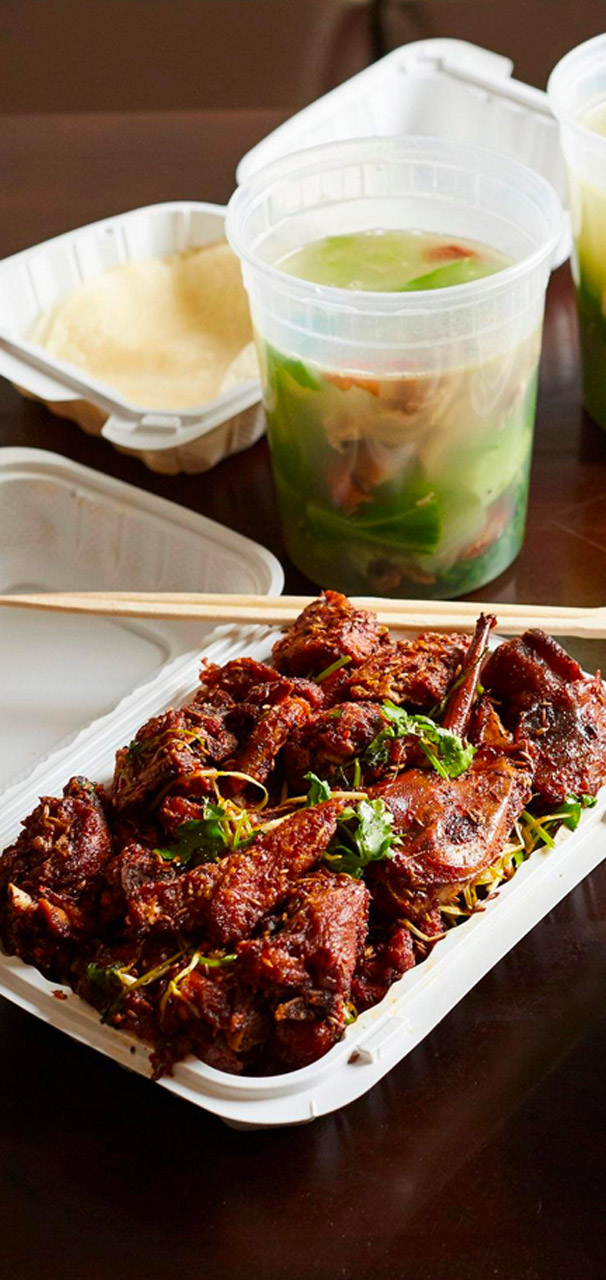





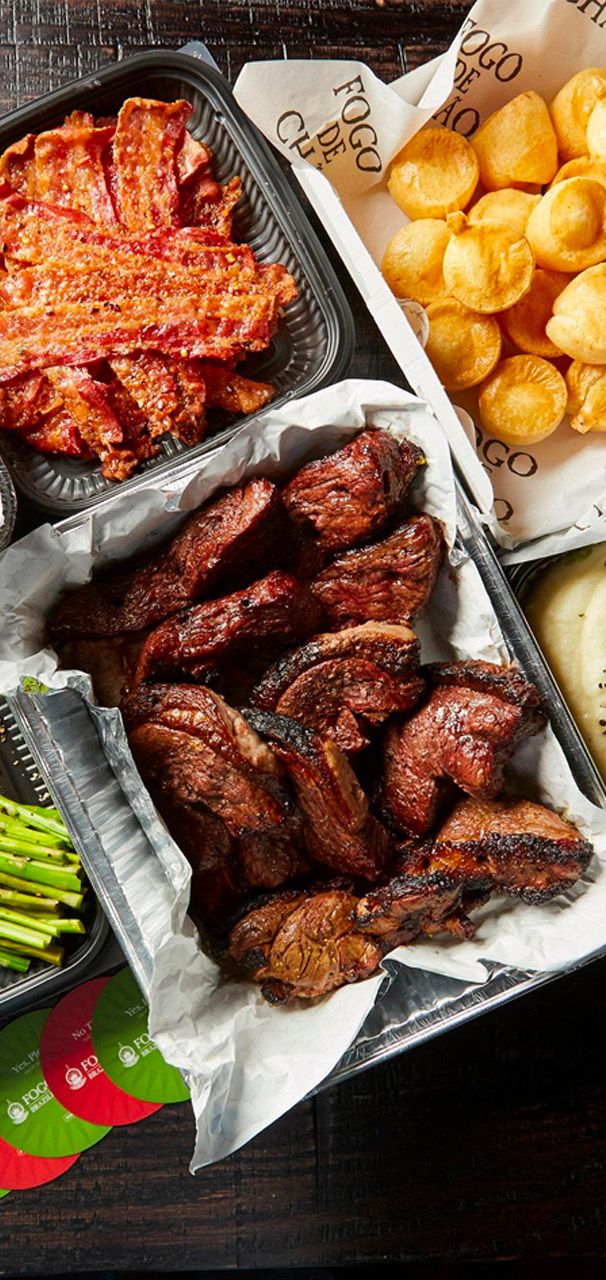







Takeout has never looked–or tasted–this good. When coronavirus shuttered Long Island dining rooms in the spring of 2020, restaurants had to revamp their entire approach to food to-go. No soggy burger buns or rubbery pasta here–instead, menus changed, cocktails suddenly became mobile and inventive packaging became paramount to delivering the best at-home dining experiences. Newsday’s FeedMe hereby acknowledges the Long Island eateries that made extra effort with The Takeout Awards.
Best Burger Deal
Snaps American Bistro Rockville Centre and WantaghAs takeout began to account for more and more of Snaps’ business, chef-owner Scott Bradley reworked his weekly Thursday $5 burger special into a daily affair that includes four half-pound burgers for $25.99.
Cheddar-topped patties are packed in one container, the toasted sesame-seed buns and toppings in another. Takeout-friendly Parmesan-truffle fries ($6) are more challenging—they’re packed with holes poked in the box.
More InfoMost Adventurous
New Fu Run Great NeckNot a thing goes to waste when you order the Peking duck special ($68) at New Fu Run. It takes chef Shao three days of preparation and he is determined to elevate every morsel.
The breast meat, sliced neatly and covered with burnished skin, is accompanied (separately) by paper-thin pancakes, scallions, cucumber and sauce so you can make your own wraps at home.
The dark meat is hacked into smaller bone-in pieces and stir-fried with cumin and chili for a second meal. The remaining carcass is turned into two quarts of duck-cabbage soup. Order at least two days in advance.
More InfoBest Attention to Cocktail Details
Hermanas LindenhurstMargarita pouches and to-go cup daiquiris are one thing, but wouldn’t you like to bring home something a little more, you know, classy from time to time?
Consider, for instance, its Negroni Lila ($14), a purple-hued concoction borne of gin, vermouth and Luxardo Bitter, or perhaps its Lavender Bee’s Knees ($13), a Prohibition-era pleasure perfect for our prohibitory times.
In the wrong hands, it might be little more than a watery disappointment by the time it reaches your door. The restaurant loads one compartment of a cardboard cup holder with a split of cava, a second with a vessel of honey, lemon, gin and lavender bitters, and a third with the cocktail glass itself, inside of which is a single mammoth ice cube showered with dried lavender blossoms. Combine the three and presto chango—you’ll feel like a home bootlegger, but minus the bathtub gin.
More InfoBest (Not) Dressed Ramen
Rakkii Ramen SmithtownRamen purveyors figured out long ago that keeping the broth separate from everything else is paramount when it comes to successful takeout. Reheat the broth at home, then you can add everything else.
Here, takeout ramen is delivered in the most adorable modular way. The various components (noodles, chashu, narutomaki, scallions, egg and a sheet of nori) come in a top container nearly fitted above the broth, which is pack-aged in its own tub.
Lift that top container away, and it takes but a few flicks of the wrist to slide this colorful composition into the fragrant, liquid depths of tonkotsu ($14) or miso broth ($15).
More InfoGood For Family Fun
Fogo de Chão Brazilian Steakhouse Carle PlaceYou’ll love the home game version of the dining room spectacle that occurs at Fogo de Chao in Carle Place. The “Full Churrasco Home Experience” ($110) feeds six and comes with five kinds of ready-to-cook meats.
Grill and slice those, meanwhile setting out the side dishes—asparagus, mashed potatoes, strips of sweet-peppery bacon and Brazil’s legendary cheese bread, pão de queijo.
Fogo’s servers are dressed like gauchos (the cowboys of South America) and at the restaurant move from table to table, plying customers with platters of skewered meats. Join in the fun at home by drawing straws to see which family member will serve all the others as the evening’s gaucho, and then pass out the included coasters to the other diners. Play continues until everyone’s coasters are red or someone splits their pants.
More InfoPrettiest Halal
The Halal Girls HuntingtonWhat patrons expect from a steaming-hot bowl of halal chicken over rice is tender spiced meat, perfectly cooked golden rice and a drizzle of white sauce (usually, yogurt and mayo) to deliver the velvety richness we crave. What they don’t necessarily expect is for it to be pretty.
However, The Halal Girls in Huntington pushes the boundaries in their version ($7), with evenly slivered thigh meat, buoyant romaine lettuce and an artful drizzle of both white and hot sauces.
Even the falafel wrap ($6) flirts with beauty—its plump fried-chickpea orbs are stained bright green from pulverized fresh herbs, and the pita wrap itself bursts open to one side into a riot of lettuce and diced tomatoes.
More InfoMost Rewarding DIY Meal
Ssambap Korean BBQ Stony BrookKorean barbecue is one of the most engaging restaurant experiences you can have: Once the server has turned on the tabletop grill and delivered the raw meat and accoutrements, you’re on your own. Ssambap in Stony Brook rejiggered its barbecue menu for maximum involvement by takeout customers.
Choose from nine meats (such as short ribs, ribeye, pork belly, $28 to $40) and it will be accompanied by fresh lettuce leaves and bean paste for wrapping.
You’ll also receive rice (white or multigrain with beans) and, as is customary with Korean meals, a slew of individual banchan (side dishes) including kimchi cabbage, tofu skin, pickled daikon, pickled cucumber and pickled onion. Want more to do? You can even request your meat raw and grill it yourself at home.
More InfoGratitude Game

Gratitude Game

Place the phone in the center of the table. Youngest goes first. You draw it, you discuss it.
Let’s play!A father’s anguish at the Fire Island Lighthouse



Haunted LI
A father’s anguish at the Fire Island Lighthouse
The following is compiled from Long Island legend, as reported in Newsday’s archives. Some elements of this story can’t be verified. Read and judge for yourself…
Ever climbed the 182 steps to the top of the Fire Island Lighthouse?
Did you hear moaning? Unexplained footsteps?
If so, you might have encountered the ghost of Nathaniel Smith.
In the mid-1800s, Smith is the lighthouse keeper as it is undergoing a major construction project. He lives nearby with his wife and daughter.
Winter hits and Smith’s daughter falls ill from the Long Island cold.
There’s no bridge to Fire Island at the time, and the lighthouse is still under construction. So it takes doctors three days to reach the island.
By then, it is too late. Smith’s daughter dies.
Some say the pain drove Smith and his wife apart and that he died years later, alone and heartbroken, at his quarters near the lighthouse.
Legend has it that the unexplained sound of footsteps are Smith racing to the top of the lighthouse as one more attempt at getting help for his daughter.
And the moans heard at the top of the lighthouse could be yells for the doctors to hurry – or the pain of a father who has just lost his daughter.
There have even been some reports of people seeing a man at the very top of the lighthouse – holding vigil, even 150 years later, that help would arrive for his little girl.
But that help would not arrive in time.
So the next time you’re on Fire Island, take a moment to think about Smith, whose contributions made the lighthouse the marvel it is today – but who also paid a great personal price for his efforts.
Haunted long island katie’s bar smithtown




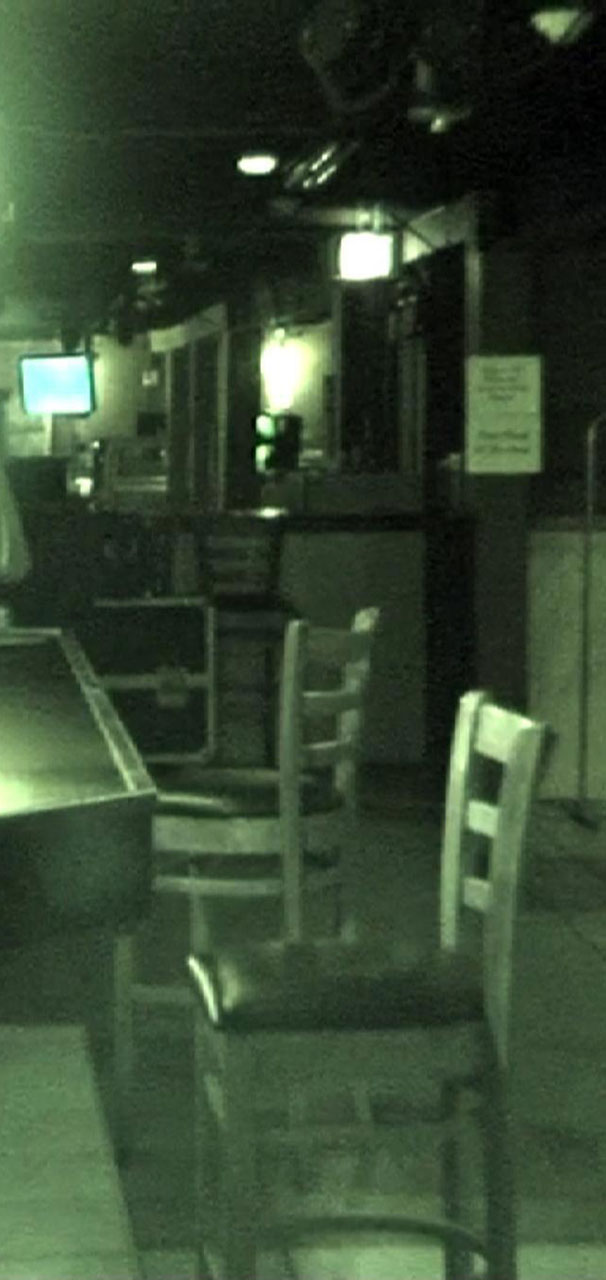
Haunted LI
The tortured tale of Charlie Klein
The following is compiled from Long Island legend, as reported in Newsday’s archives. Some elements of this story can’t be verified. Read and judge for yourself…
Katie’s Bar in Smithtown has long been a place to hang. And if you start seeing things, you should know – it might just not be that you’ve had a few too many.
In the 1920s, a bartender named Charlie Klein works at the Smithtown Hotel, just across the railroad tracks from where Katie’s stands today.
Charlie’s life hits a rough patch; his wife passes away, and he soon gets into legal trouble for serving alcohol during Prohibition.
Charlie takes his own life.
Not long after, patrons at Katie’s begin seeing a man in a 1920s-style topcoat and hat walking through the bar.
It’s believed to be the ghost of Charlie Klein.
And despite reports of flying wine glasses, unexplained footsteps and people getting sudden chills, there’s one crucial thing you should know about this apparition.
Not long after current owner Brian Karppinen bought Katie’s, he was trying to close an emergency door at the top of the stairs, when he says the handle suddenly broke.
He fell backwards. “But then I felt something push me on my back forward, to keep me from falling” down the steps.
He believes he was actually saved by Charlie … yes, despite his tortured past, Charlie is considered a “guardian angel” and friendly presence, says George Arns, who owns the house where Charlie killed himself.
Karppinen says there seems to be an array of ever-shifting spirits, and video posted on YouTube shows things such as an orb zipping around the bar and a soda gun floating on its own.
So the next time you’re at Katie’s in Smithtown, check out the basement bar, which is believed to be the most haunted area.
And if you see a man in a derby hat disappear into a wall. Well, now you know the back story!
Haunted Long Island Raynham Hall








Haunted LI
The heartbreaking tale of Sally Townsend
The following is compiled from Long Island legend, as reported in Newsday’s archives. Some elements of this story can’t be verified by officials at Raynham Hall. Read and judge for yourself …
Many ghost stories are about death. Some are about unfulfilled romance.
But Raynham Hall in Oyster Bay can lay claim to both – so say visitors who report seeing a young woman and a British soldier within its walls.
It’s the winter of 1778 — the height of the Revolutionary War — and 17-year-old Sally Townsend and her family are at home when a British commander, Lt. Col. John Simcoe, 27, arrives to the white saltbox house.
He tells the family he’s moving in and establishing a British base there; the Townsends have no choice but to comply.
Sally takes a liking to Simcoe. She bakes him doughnuts and he writes her what some historians believe is America’s first valentine. Their romance blooms in the coming months.
One day, Sally sees a mystery man sneaking into the house and leaving a note in a kitchen cupboard. Not long after, a friend of Simcoe’s — Maj. John Andre, who frequently visited the house — sneaks in and reads it.
He does not know Sally has seen him.
What he also doesn’t know was that before he had gotten there, Sally had snuck into the kitchen and read the note herself. Later in the day, she tells her brother – one of George Washington’s most trusted spies – what she has read and seen.
Maj. Andre is soon captured and executed. Simcoe, pictured here, feels betrayed and soon leaves Oyster Bay, never to return.
Sally never marries. She dies alone at Raynham Hall at the age of 82, a valentine from Simcoe still among her most prized possessions.
To this day, visitors say her second-floor bedroom is the coldest spot at the house. “It makes you feel anxious, as if it’s a weight on your chest,” said one.
Noises have been known to come from the room late at night, including screams of “no!”
Visitors have also felt a coldness in the Colonial Room, the room downstairs where Sally hid as she watched the men in the kitchen that day. And a gardener has reported seeing a vision of Sally in a black dress walking the grounds.
Other visions have been known to haunt the property as well, especially a hairy 20-something man in a dark coat with brass buttons on it. Sometimes he rides a white horse.
Visitors report doors swinging open, papers rattling, and the sounds of foot steps.
Many say it’s Maj. Andre (pictured), executed for what happened at that house. In recent years, one psychic walked into the bedroom Andre used and said, “Somebody’s dead in there.”
So what was on that note that Sally read?
The note allegedly revealed that Andre had been plotting with Benedict Arnold to bring about the surrender of West Point, in a development that could have changed the course of the entire Revolutionary War.
But a teenager making doughnuts at her home in Oyster Bay had foiled the plot and changed the course of American history – before dying alone and heartbroken for her troubles.
These days, Raynham Hall still operates as a museum and is more focused on their history than any alleged ghosts …
…but every year, they still hold a Ghost Parade to honor that part of their history. This year, amid the coronavirus, they instead have five 12-foot ghost puppets up and about.
Be afraid!
